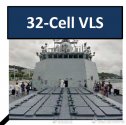You are using an out of date browser. It may not display this or other websites correctly.
You should upgrade or use an alternative browser.
You should upgrade or use an alternative browser.
US Military News, Reports, Data, etc.
- Thread starter tphuang
- Start date
The graph appears to show a ship with a block of 64 vertical cells ahead and another equal block of 64 vertical cells amidships.
It looks like 96 baseline and drop to 64 Mk 41 + 12 large cells.
If they decided to add another hull module amidships, it might be possible to add another 64 cells or another 32 (or 12) up front if you wanted an extra long nose.
Still cell counters are going to be mad at the baseline.
There must have been a misinterpretation in what was reported by NAVSEA, which suggests in the future an exchange of 32 cells for 12 larger cells capable of accommodating a hypersonic missile and everyone is deducing that the ship has 32 cells ahead.
I highly doubt that the DD(X) will have 64 total vertical cells or 96 total cells, the US Navy's planning is to have a ship between the Zumwalt and Ticonderogas tonnage, the ship will have to contain between 10,000 to 13,000 tons, a ship of this size with this amount of vertical cells is very limited. Imagine if the 32 cells were exchanged for 12 larger cells, that would mean that the ship would have 44 VLS.
It will act as a successor to the Ticonderoga, so the ship's mission is primarily to act as an air defense ship for the CSG, a ship with 64 or 96 cells is too little for the mission the ship intends to fulfill. I clearly see a ship between 10,000-12,000 tons with 128 VLS, being able to swap 32 cells for 12 larger cells to accommodate hypersonic missiles, which leaves the ship with 108 VLS.
"Is this one rusty? Maintenance status of the first F35C assigned to the frontline is concerning"
The F-35C(VFA-147) of the USS Carl Vinson(Carrier Air Wing 2) wearing out fast during its deployment which has been taking place since August 3, 2021, when CVN 70 left the San Diego Naval Base.
At this time, Carrier Strike Group 1 is in the South China Sea.
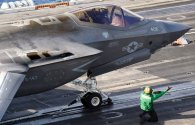
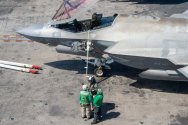
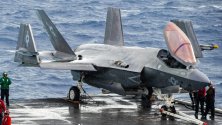
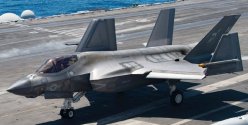
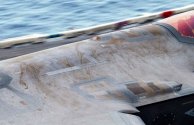
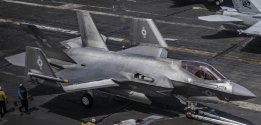
More pictures:
"Is this one rusty? Maintenance status of the first F35C assigned to the frontline is concerning"
The F-35C(VFA-147) of the USS Carl Vinson(Carrier Air Wing 2) wearing out fast during its deployment which has been taking place since August 3, 2021, when CVN 70 left the San Diego Naval Base.
At this time, Carrier Strike Group 1 is in the South China Sea.
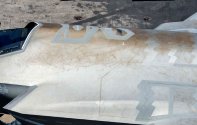
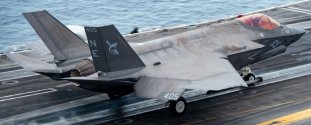
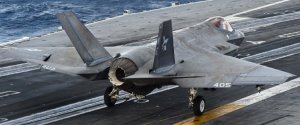
broadsword
Brigadier
Can't be ferrous metal they are using on the fuselage.
Maybe it should be wise to finish the new missile design and certificate if for use BEFORE they start to design ships for it.The graph appears to show a ship with a block of 64 vertical cells ahead and another equal block of 64 vertical cells amidships.
There must have been a misinterpretation in what was reported by NAVSEA, which suggests in the future an exchange of 32 cells for 12 larger cells capable of accommodating a hypersonic missile and everyone is deducing that the ship has 32 cells ahead.
I highly doubt that the DD(X) will have 64 total vertical cells or 96 total cells, the US Navy's planning is to have a ship between the Zumwalt and Ticonderogas tonnage, the ship will have to contain between 10,000 to 13,000 tons, a ship of this size with this amount of vertical cells is very limited. Imagine if the 32 cells were exchanged for 12 larger cells, that would mean that the ship would have 44 VLS.
It will act as a successor to the Ticonderoga, so the ship's mission is primarily to act as an air defense ship for the CSG, a ship with 64 or 96 cells is too little for the mission the ship intends to fulfill. I clearly see a ship between 10,000-12,000 tons with 128 VLS, being able to swap 32 cells for 12 larger cells to accommodate hypersonic missiles, which leaves the ship with 108 VLS.
You know, like as the Russians did.
One factor that may be related to this accelerated corrosion is the rivets. Hundreds of F-35s were manufactured with the wrong rivets applied to critical areas, LM claims the problem would not necessarily need to be fixed once it was identified.Abrasion from cleaning maybe? Who knows how that RAM is whether coating or material itself or paint on top of material.
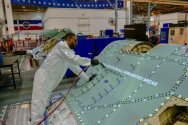
The F-35 uses titanium rivets incorrectly installed in places where Inconel was needed. That is, depending on the use of the aircraft, and conditions exposed, there will be corrosion in the titanium rivets. I'm not saying that this happens overnight, but if the expectation was to use the toy for X years, you can lower that to the same flight hours and we'll see some units dropping off early.
Inconel is more resistant to corrosion due to the formation of a passivating oxide layer on the less porous surface. Titanium also forms this oxide layer, but it is usually more porous, in addition, the titanium rivet is cheaper (US$5), costing 1/4 the price of the inconel rivet (US$20).
Titanium is most incompatible with carbon fiber composite materials (F-35 fuselage). But, in addition, RAM materials (many of which have “pinches” of iron) are even more susceptible from a corrosion point of view.
The F35's RAM materials are composed largely of iron which in contact with the fuselage's carbon fiber composites lead to a number of corrosion problems. Rivets are components that are mostly required for shearing (after all, fuselages are membranes, technically speaking) and in certain regions of the fighter it is necessary to use inconel (instead of titanium).
Here we have a very serious factor that can lead to corrosion when two dissimilar metals are brought into contact. This potential changes with temperature.
Inconel is a nickel and chromium alloy that forms a very thin chromium oxide layer that protects it from the inside (pure titanium and pure aluminum also generate this protective layer). There is the problem of thermal compatibility (different metals have different coefficients of thermal expansion), there is the problem of surface tension that determines the compatibility of the material with the coatings, there is the problem of friction between different materials and there is the problem of the electrical potential generated in the contact of two metals that can generate anodic and cathodic regions in the structure of the part, leading to corrosion even in places other than the heterometallic contact surface.
This is called intermetallic or bimetallic corrosion.

